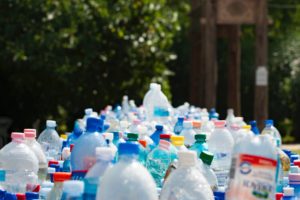Re-Envision Our Waste System
Although the City of Duluth has made numerous pledges to adopt environmentally-friendly policies including a commitment to reduce greenhouse gas emissions by 80% from municipal operations by 2050, it could do more to re-envision its waste system. The Western Lake Superior Sanitary District (WLSSD), originally created by the Minnesota Legislature in 1971 to clean up the St. Louis River, is responsible for solid waste management within Duluth and beyond to other parts of St. Louis and Carlton counties. WLSSD is responsible for providing services including solid waste planning, hauler and facility licensing, facility inspections, and old dump management.
WLSSD also maintains several facilities including the District’s Transfer Station located at 27th Avenue West and Interstate 35 in Duluth. This transfer station receives about 266 tons of municipal solid waste and construction and demolition waste every day, six days a week, which is then, after being inspected for banned materials, taken to the Moccasin Mike Landfill in the city of Superior, WI. WLSSD also has a regional household hazardous waste facility, a yard waste compost site, and an organic waste composting facility located near the transfer station, which residents can bring particular types of waste to. WLSSD also operates a Materials Recovery Center which was constructed in 2001 just north of Duluth in Rice Lake Township. At the Materials Recovery Center, residents can drop off or take home potentially reusable items such as furniture, building materials, electronics and appliances.
WLSSD’s various waste management programs have helped divert waste from being sent to landfills. In 2012 the Materials Recovery Center diverted approximately 16 tons of reusable materials that would have otherwise gone to a landfill. Pursuant to city ordinance, residents are required to separate recyclable materials from trash into recycling carts provided to subscribed customers by licensed waste haulers. The most recently calculated recycling rate for the WLSSD is 47%. The organic waste composting facility can handle up to 3,950 tons of source-separated organic material and annually receives about 3,000 tons of organic waste from commercial entities separating pre-consumer organic material and about 50 tons annually from the drop off sites that residents and small businesses can bring organic waste to.
Although WLSSD’s different waste management programs and facilities have helped reduce the volume of municipal solid waste being delivered to landfills, 266 tons of municipal solid waste are still being delivered to the transfer station in the Lincoln Park neighborhood. As WLSSD acknowledges in it’s 2013 Solid Waste Management, the district could do more to reduce waste, especially in terms of education programs aimed at educating residents on how to buy products with less packaging, reuse more, and take advantage of WLSSD’s facilities, such as the Materials Recovery Center and the organic waste composting facility. The city should encourage participation in these existing programs, while also helping WLSSD to re-envision a waste system in which less or no waste ends up in landfills, and more is reused or eliminated at the source.
Sources:
Did you take this action? Report it!
Help us show our collective community impact by reporting that you took this action.




